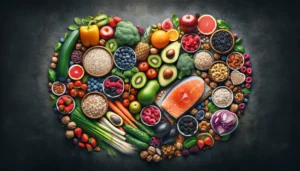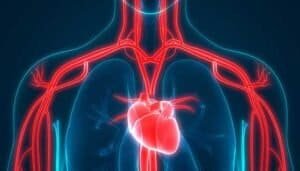What is it?
Intermittent Fastnig (IF) is a popular diet trend, which unlike many other trends has lots of research detailing the pros and cons. With scientific investigation, we can better understand it, and tailor it to the individual.
Ultimately, it involves eating little to no calories for a period of time. . It’s important to acknowledge that with so many people struggling with food insecurity, those that undertake it are in a position of privilege. We do that naturally while we sleep and at either side of sleep, but it extends it beyond normal eating patterns and it’s done on purpose.
For research purposes, there are different types of IF plans which I’ll detail below. Additionaly I will answer lots of FAQ including;
- How long should you fast for
- What are the rules of fasting
- How do you fast properly
- What fasting does for your body
But first!
It’s worth stating that it is most unhelpful that it has been hijacked by diet culture and supported by unqualified social media health ‘gurus’. Unfortunately, these people can be seen to sell fasting plans. Imagine making money off a diet plan that simply suggests no food??? Unfortunately, this group of ‘biohacking’ dietary bullies are also promising big things such as intermittent fasting being the new elixir for achieving optimal health and living for eternity.
Different Types of Fasting
Alternate-Day Fasting (ADF)
This involves fasting every other day. Fasting days involve consuming no calories or sometimes very little calories e.g. days where you might consume 500-600kcal (20-25% of calorie needs). On the days that you are not fasting, you eat as normal. In research, sometimes they make people consume 125% of their calorie needs on the non-fasting ‘feast’ days. So, if 2000 calories is 100%, 125% is 2500 calories.
Modified Intermittent Fasting
This is similar to the above but there are less fasting days each week. For example, the 5:2 diet where you eat normally for 5 days and fast for 2 days. A lot of the numbers are pulled out of thin air by the way. In case you’re thinking that there’s logic, or dare I say it a scientific hypotheses, behind them.
Time Restricted Feeding (TRF)
This involves fasting for a specific window each day and eating normally for a certain number of hours each day. For example, eating freely for 8 hours each day and fasting for 16 hours of which 8 of those you may be asleep. This is often referred to as the 16:8 method. It’s nearly how our granparents ate, but they didn’t deem it necessary to label themselves. Generally, people interpret this as skipping breakfast, while enjoying lunch and dinner between 12 and 8pm. 8 hour of an eating window has not been investigated to see if it’s preferable to 10 hours or 12 hours. 14:10 and 12:12 are not shown to be less effective.
But… when you eat matters when it comes to TRF
It may be preferable to eat from 8/9am to 4/5pm and fast the remaining hours. This is for a lot of reasons including eating when you require the food to function at your best, eating in daylight hours, eating when our metabolism is running faster and because the quality of nutritional intake tends to slide for many after 5pm. Eating earlier could potentially better manage hunger and improve metabolic flexibility (switching from using carbs to fats for energy). Last year a study suggested eating later increases morning hunger and favours fat storage while it decreases a satiety hormone called leptin, the calories burnt when awake as well as body temperature.
Religious Fasting
Researchers are using people who are fasting for religious or spiritual purposes in their studies. A lot of this research is observational rather than a controlled trial. For example, Ramadan which involves fasting from sun rise to sunset. So it teels us a correlation but not cause and effect.
IF for Weight Loss
Studies show that IF leads to similar weight loss as a calorie-controlled diet. So, it’s the reduction of calories leading to weight loss in both cases. It may help some people stick to a calorie-controlled diet in the short term. Can people stick to it in the long term? Possibly not, so weight loss is less likely to be maintained when compared to methods that work of long-term behaviour change. After all, the health of our body (and the body composition to some extent) reflects the sum of our healthy and unhealthy habits.
Also, it’s important to move away from the idea of weight loss and towards fat loss. IF can result in muscle loss. Losing fat while retaining or increasing muscle is nearly always better for health (this lowers body fat %). So, either avoiding IF or adapting an approach that helps protect muscle mass is needed. The person following the IF protocol needs to be educated on this, and willing to do what it takes in terms of dietary manipulation with increased protein intakes as well as consistently strength training.
Is ADF better than Calorie Restriction
A study compared ADF at 25% of calorie requirements on fasting days and 125% of calorie needs on the other days compared with people who followed a daily caloric restriction of 25%. After one year, both the caloric restriction and ADF groups lost weight. The ADF wasn’t superior for weight loss, weight maintenance or heart disease protection. Both groups displayed similar weight loss results at 6 and 12 months. The ADF group had the poorest compliance and the highest dropout rate. Nonetheless, this isn’t how the diet is supposed to work. People are supposed to eat freely on the days they are not fasting. So, maybe that would have changed things a bit (for better or worse!).
Some of the Cons
- Sometimes food quality reduces with fasting as people feel they can eat anything, so the person becomes less nourished.
- If a person has children, what sort of example are they setting?
- This can cause a starvation binge cycle.
- It isn’t suitable for those with osteopenia or osteoporosis (or a family history), those with a past or current eating disorder, people with type 1 diabetes, type 2 diabetics who take insulin, those who suffer with hypoglycaemia, those taking medications that require consumption of food at the same time, pregnant women, lactating women, etc…
- IF may work better in rodents than humans, especially when looking at weight. A 12 hour window might work better in humans while 3-4 hours or 8-9 hours might work better in animals. I say might as research suggests this but all studies need to be done more than once to see if the results are the same.
- Studies report downsides to ADF such as constipation, hunger and light headedness.
- One study showed reductions in testosterone and insulin-like growth factor (helps manages growth). Therefore, another way it may lead to muscle loss or deter muscle gains. Testosterone can reduce as we age so it may not be suitable for older persons.
- Are the positive results seen in these studies to do with reduction in weight or benefits of fasting? Hard to know unless controlled for.
- Other side effects include temperature change, fatigue, headaches, irritability, low energy and hunger as well as gut issues (constipation, gas, bloating).
- Could it trigger disordered eating or facilitate it?
Some of the Pros
- Easier for those who do not wish to count calories.
- Nighttime eating, in other words eating from 5pm to midnight, can lead to overconsumption of calories and increase inflammation. Fasting after dinner could help manage this.
- Pros may be seen (more so) in those who are physically active.
- Fasting may help with insulin resistance (ADF was better than calorie controlled over a 1 year period). However, education on meal frequency is needed as 1 meal a day was shown to result in poorer blood glucose control than 3 meals a day.
- The fasting approach that you choose can be tailored to you. After all, we don’t have research that says an 8h window is better than a 10h or 12h window.
- It may also be beneficial in people with non-alcoholic fatty liver disease (NAFLD). A recent meta-analysis study estimated that by the year 2040, more than 50% of the adult population would be diagnosed with NAFLD! A systematic review that included 14 studies were analysed. Studies varied in NAFLD diagnosis, duration of IF (4-52 weeks), and type of IF (5:2 diet, modern alternate-day fasting, time-restricted eating, or religious fasting). Body weight, BMI, and waist to hip ratio all significantly improved following fasting intervention. Adults with NAFLD showed an improvement in liver blood tests, fat build up in their liver and liver stiffness after fasting.











